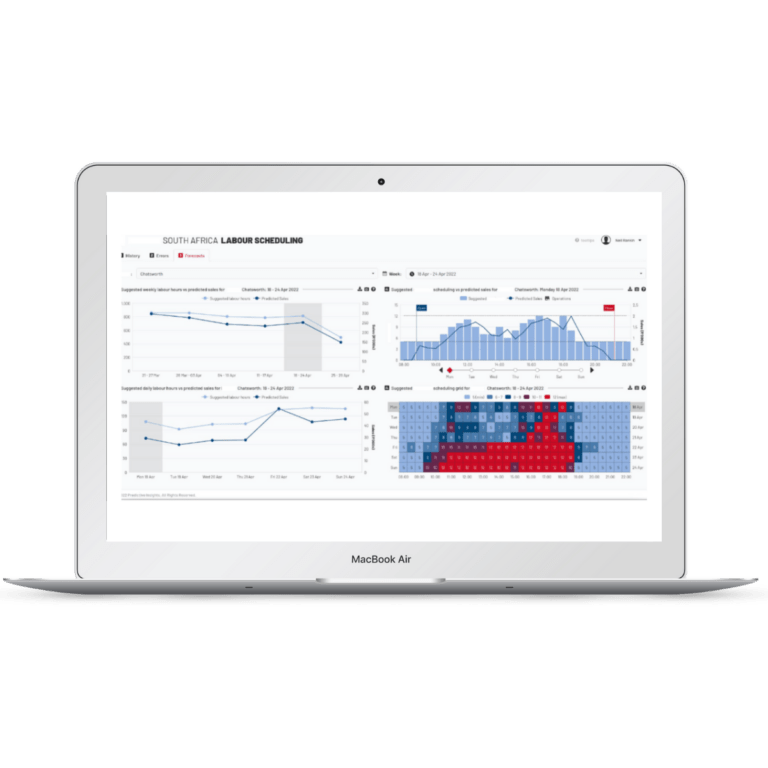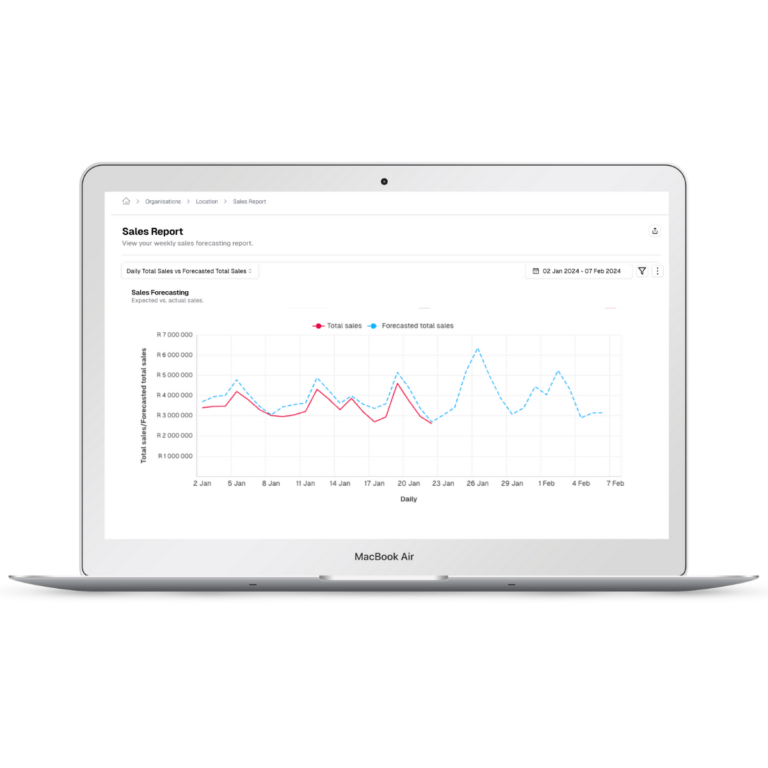Workforce Management: From People to Profits
Gaining a competitive edge in today’s fast-paced business environment requires some innovation. We found that harnessing the power of data to optimise workforce management is the best way to do that, as it filters down into many other streams, including labour scheduling, customer experience, sales forecasting, and revenue.
Let’s explore how predictive insights can transform workforce management to drive business growth.
The tightrope: “Always overworked or overstaffed!”
From scheduling shifts to managing staff turnover, striking the perfect balance between having enough employees to manage demand but not too much staff so as to avoid excessive labour costs on downtime, is an ongoing struggle.
Businesses face numerous challenges in optimising their workforce. Effective workforce management is not only crucial for businesses to save money and optimise operations but also essential for ensuring employee satisfaction and well-being.
By balancing the needs of both employers and employees, businesses can create a mutually beneficial environment that fosters productivity, reduces turnover, and promotes a positive work culture.
Businesses face numerous challenges in optimising their workforce. Effective workforce management is not only crucial for businesses to save money and optimise operations but also essential for ensuring employee satisfaction and well-being.
By balancing the needs of both employers and employees, businesses can create a mutually beneficial environment that fosters productivity, reduces turnover, and promotes a positive work culture.
Cost Savings Through Efficient Labour Scheduling
One of the primary goals of workforce management is to optimise staffing schedules to
- minimise labour costs while
- meeting operational demands.
Employee benefits (and indirectly, company benefits…)
An added benefit, apart from cost savings, is that efficient scheduling has a positive impact on employees by minimising instances of overwork whilst also preventing instances of boredom and inefficient use of time.
When employees are not overburdened with excessive shifts, they are more likely to maintain a healthy work-life balance and feel valued by their employers. This, in turn, contributes to higher job satisfaction and lower turnover rates, as employees are less likely to seek employment elsewhere due to burnout or dissatisfaction.
When employees are not overburdened with excessive shifts, they are more likely to maintain a healthy work-life balance and feel valued by their employers. This, in turn, contributes to higher job satisfaction and lower turnover rates, as employees are less likely to seek employment elsewhere due to burnout or dissatisfaction.
Optimise your labour scheduling.
Book a demo.
Optimising customer experience (and revenue),
one shift at a time.
Happy customers = higher revenue: The biggest truth (too) often overlooked by retailers and restaurants.
One of the most common pitfalls is attempting to cut costs by understaffing, which inevitably compromises customer satisfaction. When our workforce is stretched thin or overwhelmed, the quality of service diminishes. Our staff becomes too preoccupied, leading to lapses in attention and longer wait times for patrons, ultimately leading to dissatisfied customers and decreased revenue. Unhappy customers = lower revenue.
Positive customer experiences lead to repeat purchases, word-of-mouth referrals, and brand advocacy, all of which contribute to sustained revenue growth over time. By prioritising customer needs, delivering exceptional service, and building meaningful relationships, businesses can cultivate loyalty and drive sales.
One of the most common pitfalls is attempting to cut costs by understaffing, which inevitably compromises customer satisfaction. When our workforce is stretched thin or overwhelmed, the quality of service diminishes. Our staff becomes too preoccupied, leading to lapses in attention and longer wait times for patrons, ultimately leading to dissatisfied customers and decreased revenue. Unhappy customers = lower revenue.
Positive customer experiences lead to repeat purchases, word-of-mouth referrals, and brand advocacy, all of which contribute to sustained revenue growth over time. By prioritising customer needs, delivering exceptional service, and building meaningful relationships, businesses can cultivate loyalty and drive sales.
It all comes down to Sales… Forecasting
Predictive analytics enables businesses to forecast demand (and sales) accurately, ensuring not only optimal staffing but also maintaining optimal inventory levels, accurate budgeting, and ultimately, maximising revenue.
By leveraging business intelligence solutions and long-term AI forecasting software, businesses can analyse sales data and identify patterns and trends, enabling them to
By leveraging business intelligence solutions and long-term AI forecasting software, businesses can analyse sales data and identify patterns and trends, enabling them to
- anticipate changes in consumer behaviour,
- adjust their inventory and marketing strategies accordingly, and
- plan ahead, minimising stockouts and maximising sales opportunities.
May the (work) force be with you
Embracing predictive insights is not just a competitive advantage; it’s a necessity for businesses looking to thrive in today’s dynamic market landscape.
In conclusion, maximising revenue requires a multifaceted approach that encompasses workforce management, stock control, operational efficiency, and customer experience. By optimising these key areas of business operations, businesses can create value for customers, drive sales, and ultimately achieve their revenue goals.
In conclusion, maximising revenue requires a multifaceted approach that encompasses workforce management, stock control, operational efficiency, and customer experience. By optimising these key areas of business operations, businesses can create value for customers, drive sales, and ultimately achieve their revenue goals.
We've helped Nando's with their labour scheduling.
Check it out on CNN.
Book a Demo
Fill in the form below to get in touch.




